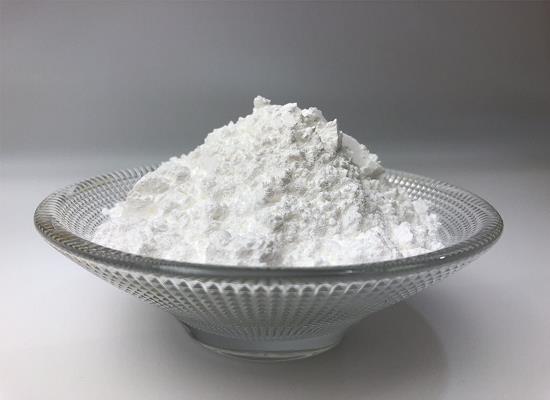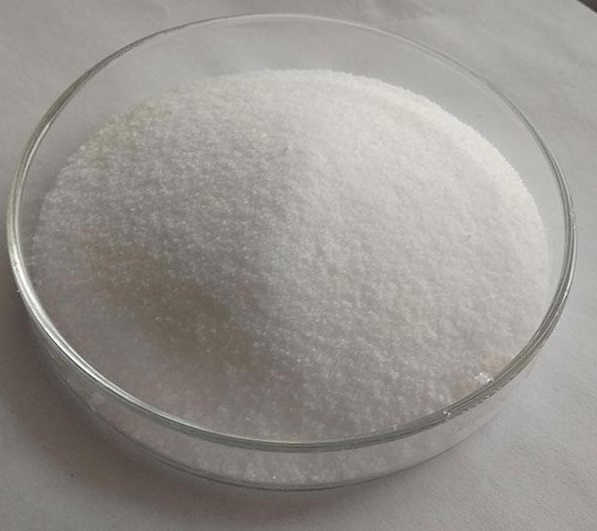Advancements in Lithium Borohydride for Enhanced Hydrogen Storage
General Description
Lithium Borohydride is a white solid with a melting point of 278 °C and a density of 0.68 g cm−3. It is soluble in some strong polar organic solvents but reacts violently with water. It exists in four crystal polymorphs, with the orthorhombic structure being the most common at room temperature. The decomposition of Lithium Borohydride releases hydrogen gas and occurs in multiple steps. Research has focused on improving its hydrogen storage properties through cation/anion substitution, composite formation, catalyst doping, and nanoengineering. Further advancements are needed to address challenges such as high operating temperatures, slow kinetics, and poor reversibility. Integrating advanced technologies and computer sciences can help enhance Lithium Borohydride’s thermodynamic and kinetic properties for practical hydrogen storage applications.

Figure 1. Lithium Borohydride
Basic Physical and Chemical Properties
Lithium Borohydride, also known as LiBH4, is a white solid with a melting point of 278 °C and a density of 0.68 g cm−3. It has a standard formation enthalpy of −190.8 kJ mol−1 and is soluble in some strong polar organic solvents, such as methyl tert-butyl ether, diethyl ether, tetrahydrofuran (THF). However, it reacts violently with water to liberate hydrogen gas. Lithium Borohydride exists in four crystal polymorphs, with the orthorhombic space group Pnma being the most common at room temperature. The tetrahedral [BH4]− groups are aligned along two orthogonal directions with severe distortion in respect to bond lengths and angles. A phase transition occurs from orthorhombic to hexagonal upon heating to 108 ºC. After being subjected to pressure, Lithium Borohydride transforms into a new phase with pseudotetragonal structure, which then changes to a cubic phase above 10 GPa. Lithium Borohydride can be synthesized through various methods such as reacting LiH or Lithium Borohydride with BF3 etherate or alkylborates or through cation exchange reaction between LiCl(Br) and NaBH4 in isopropylamine. For large-scale applications, better synthetic methods need to be developed to reduce the cost of production. 1
Fundamentals of Hydrogen Storage
Lithium Borohydride initially used primarily in chemical synthesis, gained attention in 2003 when Züttel et al. reported its hydrogen storage properties. This discovery sparked significant interest in using borohydrides for hydrogen storage over the past two decades. The thermal decomposition behavior of Lithium Borohydride has been extensively studied. When heated, Lithium Borohydride decomposes into LiH and B, releasing H2 gas. However, the decomposition process is complex and occurs in multiple steps. Differential thermal analysis (DTA) studies have revealed three main thermal events during heating: a polymorphic phase transition at around 110 ºC, the melting of LiBH4 at 278 ºC, and decomposition into LiH and B with H2 evolution at 485 ºC. Recent research has also identified the formation of B-containing intermediates, such as Li2B12H12 or Li2B10H10, during the thermal decomposition of LiBH4. The exact decomposition mechanism of LiBH4 is not yet fully understood. In theory, the hydrogen desorption of Lithium Borohydride is thermodynamically reversible, as it is an endothermic process. The decomposition products, LiH and B, can be rehydrogenated to regenerate Lithium Borohydride at high temperatures and pressures. However, the high hydrogenation temperatures are attributed to the inertness of elemental B, which hinders the formation of B-H bonds. To improve the hydrogen storage properties of Lithium Borohydride, it is crucial to tailor the thermodynamics and kinetics of the reaction. This includes reducing the operating temperatures and enhancing the reaction rates to make hydrogen storage in Lithium Borohydride more efficient. 2
Lithium Borohydride-Based Materials for Hydrogen Storage
Lithium Borohydride has shown promise as a material for hydrogen storage, but it faces limitations such as high operation temperatures, slow kinetics, and poor reversibility. To address these issues, extensive research has focused on tailoring the thermodynamics and kinetics of Lithium Borohydride-based materials. This includes methods such as cation/anion substitution, reactive composite formation, catalyst doping, and nanoengineering. Partial substitution of cations or anions, as well as creating composites with metals and metal hydrides, has been effective in adjusting the thermodynamics of Lithium Borohydride. Additionally, introducing catalytic additives has lowered the working temperatures for hydrogen storage by reducing kinetic barriers. Various materials, including carbon, metals, metal halides, metal oxides, and metal borides, have been evaluated as potential additives. Nanoengineering has also proven effective in improving the kinetics of Lithium Borohydride-based hydrogen storage, reducing working temperatures and enhancing reversibility. However, challenges such as host material inertness to hydrogen and low loading efficiency need to be addressed in nanoengineering approaches. Efforts should continue to improve the thermodynamic and kinetic properties of Lithium Borohydride for practical hydrogen storage applications. Integration of advanced technologies and computer sciences is crucial for elucidating the storage mechanism and identifying key parameters that influence behavior. Future research can focus on searching for more effective destabilizing agents, optimizing the catalytic activity of transition metals and their borides, developing novel nanostructures of LiBH4, and understanding the mechanisms of nanosynergy for Lithium Borohydride-based hydrogen storage systems. 3
Reference
1. W. Zhang, X. Zhang, Z. Huang, H. Li, M. Gao, H. Pan, Y. Liu. Recent Development of Lithium Borohydride-Based Materials for Hydrogen Storage. ADVANCED ENERGY & SUSTAINABILITY RESEARCH. 2021, 2: 2100073.
2. A. Züttel, P. Wenger, S. Rentsch, P. Sudan, P. Mauron, C. Emmenegger, J. Power Sources 2003, 118: 1.



